[ad_1]
In their early days in industrial factory floor use, robots focused on simple, non-decision-making processes. But as digitalization gathers momentum, robotics is taking on more complex and more automated functions in the form of robotic process automation (RPA).
RPA technology has evolved from running one robot to running integrated robots simultaneously assembling a product, for example, to the point where a series of robots works together to deal with workflows that encompass assembly, welding, finishing, and shipping.
Related: Making the Case for Employing Software Robots
Top RPA software comparison
Blue Prism
The SS&C Blue Prism intelligent automation platform combines RPA, artificial intelligence (AI), and machine learning (ML) to achieve strategic business goals. It offers a secure, stable, and compliant environment to propel digital transformation. The company offers pre-built automations, support from automation specialists, and training and certification opportunities. The target buyer is typically a large enterprise across a great many verticals as it has customized offerings for dozens of industries.
Key differentiators
- Blue Prism has geographically distributed operations that enable it to serve customers around the world.
- With 168,000 active RPA users, over 2,000 enterprise customers, and 10,000 certified partners, Blue Prism has the resources to tailor its offers to specific verticals.
- Industry-focused experts spearhead 42 industry-specific solutions.
- Possesses a great many connectors to enterprise applications with recent additions including intelligent document processing (Decipher IDP), human-in-the-loop automation (Interact), contact center automation (Service Assist), task mining and discovery (Process Assessment Tool, Capture), governance (ALM) and ERP accelerators.
- SS&C Blue Prism Decision creates explainable machine learning-based processes in hours rather than days. Users Customers can automate human-like decisions with minimal effort and expertise through the power of machine learning.
- End-to-end solution for process and task mining, automation, and end-to-end monitoring.
- AI-driven, intelligent document processing integration and including optical character recognition (OCR).
- Real-time, human-to-digital collaboration platform addresses more complex processes that require either manual initiation or cooperation between human and digital workers.
IBM RPA
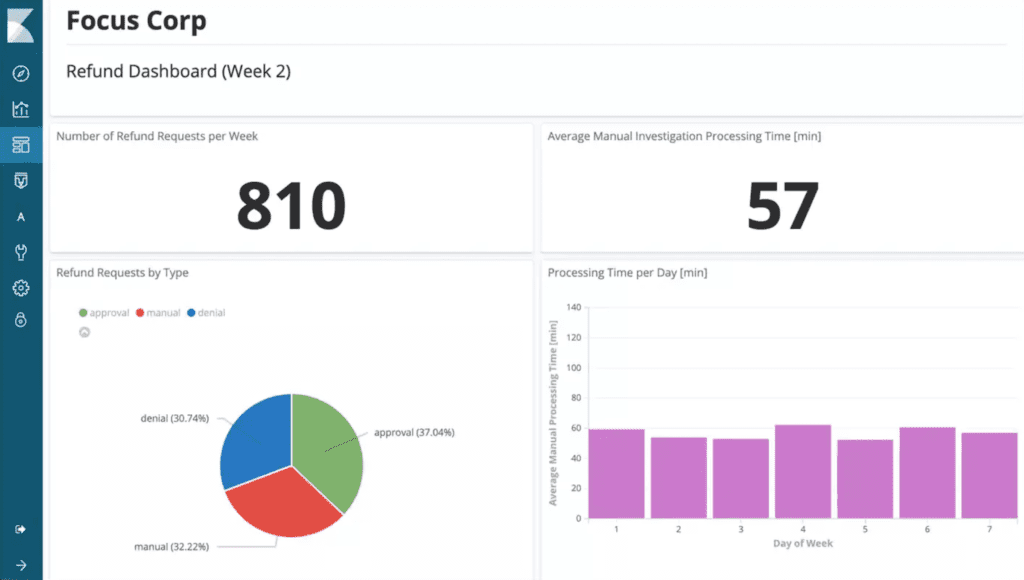
IBM Robotic Process Automation with Automation Anywhere is a robotic process automation solution that mimics the behavior of a human business user to perform repetitive tasks. It provides an entry point into the world of automated digital labor and the digital workforce. The focus is on large enterprise users and especially existing IBM customers as opposed to competing directly in the broader market.
Key differentiators
- Full-featured RPA capabilities can be delivered either as a service via the cloud or on-premises.
- This product can be purchased standalone or as an element of IBM’s Cloud Paks for Automation, which integrate tightly with many other IBM Cloud offerings.
- This solution offers a big ecosystem of IBM partners with pre-integrated tools designed for the IBM platform.
- Those needing AI-driven bot assistants that interact with end-users will find IBM tools among the best in the market. This includes capturing work interactions, order processing, and playing them back by using a software bot.
- IBM RPA is deeply integrated with Automation Anywhere within the IBM Digital Business Automation platform. This augments task automation by adding workflow, data capture, content, and decision automation to bots.
- Users can build bots faster with hundreds of prebuilt commands.
Kofax
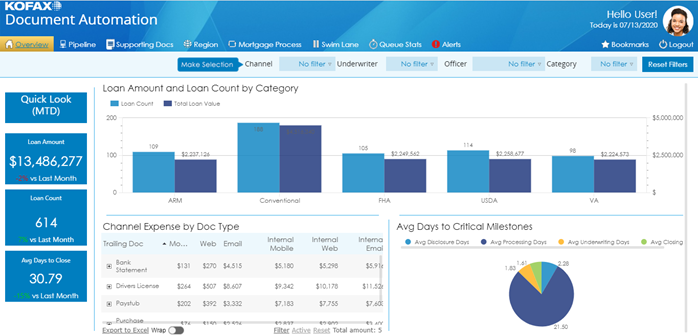
Harness the Kofax Intelligent Automation Platform to unlock document intelligence, connect disparate systems, and orchestrate human and digital workers to execute and automate workflows across high-value business processes.
In other words, it applies RPA to workflows such as insurance claims, document processing, HR processes, and invoices. Kofax tends to mainly sell its broader Intelligent Automation Platform as opposed to selling Kofax RPA as a discrete element. This tends to limit its applicability to those willing to invest in the larger product suite.
Key differentiators
- The Kofax platform applies cognitive capture and artificial intelligence to unstructured data to automate and extract information and unlock data insights.
- This product orchestrates digital workflows in collaboration with users, systems , and data.
- It brings together enterprise applications, legacy systems, mobile, and chatbots across internal and external business processes.
- Kofax’s low-code experience enables developers to solve business problems and scale innovation across the organization quickly.
- TotalAgility Intelligent Automation Platform accelerates business processes with document intelligence, task automation, and process orchestration.
Automation 360
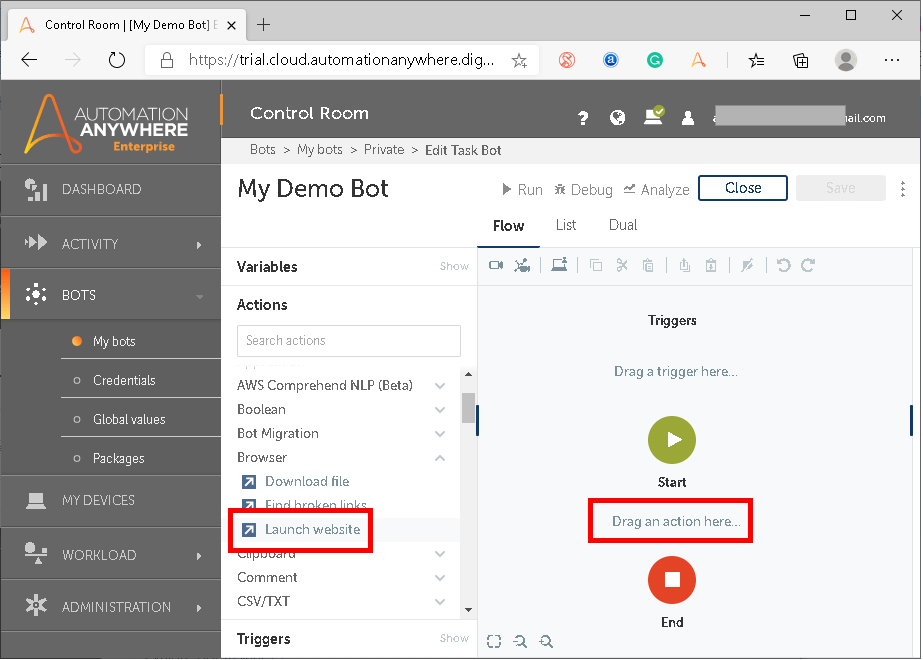
Automation Anywhere’s Automation 360 is a cloud-native end-to-end intelligent automation platform used by enterprises to automate processes with minimal infrastructure. This offering has a high usage rate among SMBs as well as large enterprises.
The company is particularly strong in bringing together business process automation (BPA) and RPA and delivering them over the public cloud. Those seeking that combination will find Automation 360 hard to beat.
Key differentiators
- The company is steadily innovating in RPA with offerings such as Automation Anywhere Robotic Interface (AARI), IQ Bot for AI/ML, Discovery Bot for process discovery, Bot Insight for analytics, and a Bot Store for marketplace integrations.
- Its AISense computer vision function is built on Google’s TensorFlow to increase accuracy.
- Its low-code features make it easy to create mobile and web apps to deploy and run bots.
- The platform is cloud-native with no on-premises offering.
- Automation 360 uses microservices packaged in Kubernetes containers in the cloud.
- The company keeps pricing simple and competitive.
TruBot
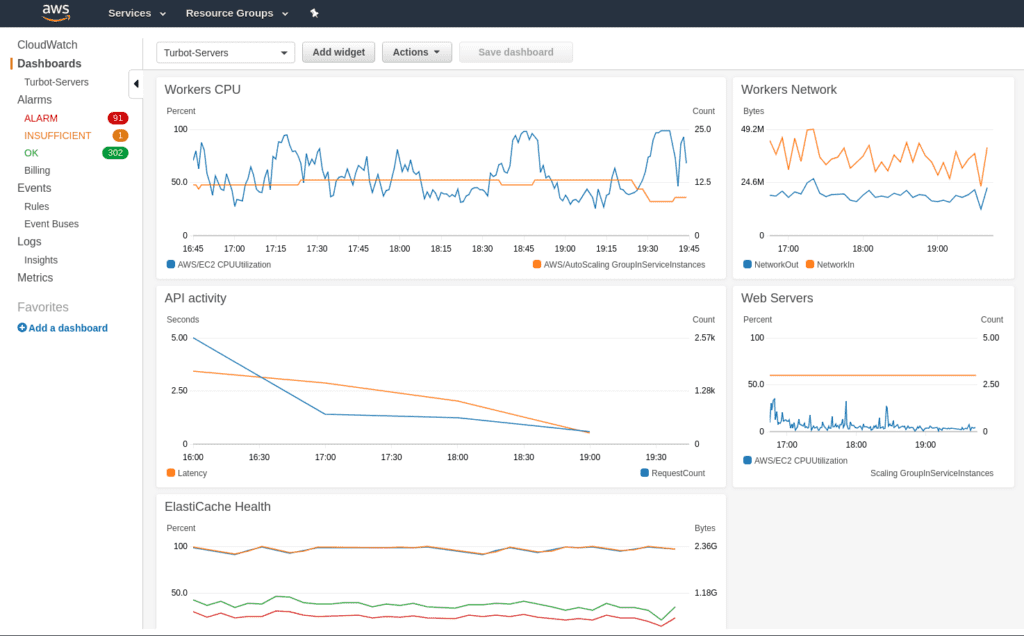
Datamatics TruBot RPA software is a digital workforce product enabling unattended and attended automation for a wide range of tasks and processes. With the integration of cognitive capabilities, such as artificial intelligence, machine learning, and natural language processing, it can handle complex transactions and deliver intelligent automation. The focus, in this case, is heavily weighted towards the application of RPA to financial transactions and accounting.
Key differentiators
- TruBot addresses use cases such as invoice creation/processing, process automation, data capture, order book automation, book closure, bank reconciliation, and credit assessment reporting.
- TruBot’s library offers over 500 pre-built components that enable faster development of document and automation flows.
- Intelligent document processing (IDP) ingests and converts unstructured and semi-structured data in documents to a structured format.
- Enhanced security with privileged security access powered by CyberArk.
- Bot execution is mapped to multiple Bot stations for failover, ensuring optimal utilization of bots.
Power Automate by Microsoft
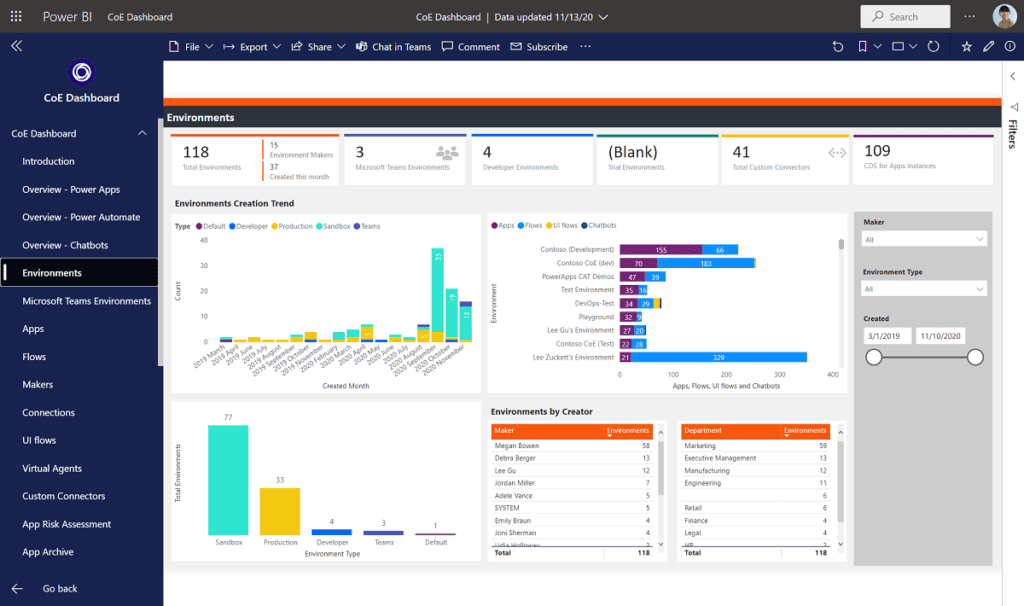
Microsoft’s Power Automate platform empowers people to build automated processes with flows in Power Automate. This is another low-code RPA toolset that offers drag-and-drop tools and hundreds of pre-built connectors that automate repetitive tasks. This product is particularly suited to those that have already bought into the Azure platform whether large organizations or SMBs.
Key differentiators
- Power Automate has a deep integration with Azure, Power BI, and other Microsoft tools.
- RPA with API orchestration integrates multiple systems of record to automate routine data transcription work.
- Power Automate has a broad automation experience with more than 16 million deployed bots driving close to 2 billion actions daily.
- Power Automate can record and visualize end-to-end processes and provides guided recommendations for creating flows and insights.
- AI Builder processes forms using document automation, process approvals, and image and text detection.
- Automation capabilities can be utilized across desktop, web, and mobile platforms.
Workfusion
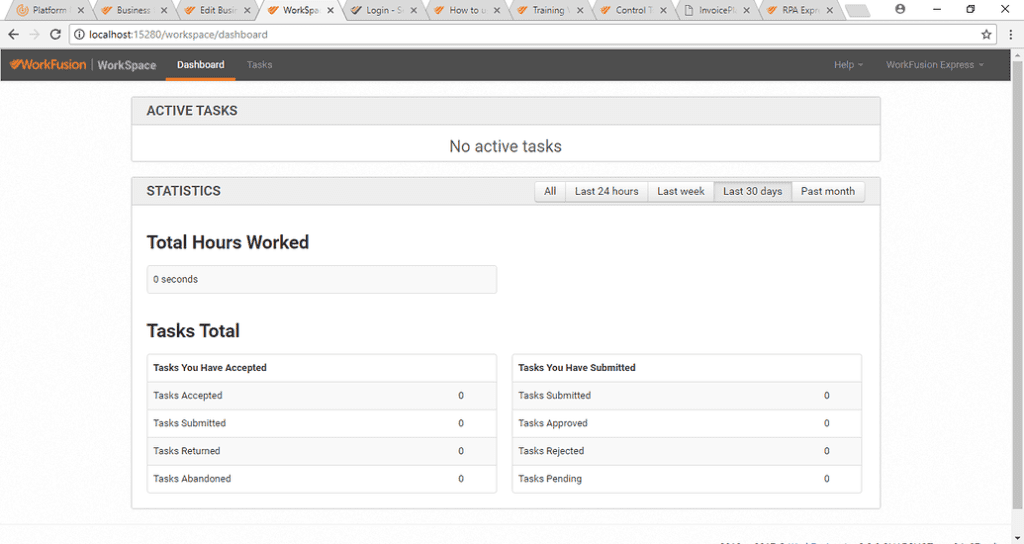
Workfusion is another of the no-code/low-code vendors. Its approach helps make the development process easier. Simple drag-and-drop building blocks are used along with pre-built steps and workflows to make core processes integration-ready, out of the box.
This platform, therefore, is particularly good for those lacking RPA development and integration expertise. It also tends to focus on the large enterprise market, particularly in the North American market and with a small footprint in Asia.
Key differentiators
- Workfusion’s features are tailored to automation and RPA for banking, finance, and insurance.
- Workfusion is especially strong in the AI/ML side of automation via pre-packaged and pre-trained ML models that are geared towards RPA use cases like loan processing, account creation, and claims intake.
- This platform includes AutoML features and RPA components for financial use cases.
- Workfusion compares automation results to industry benchmarks for specific verticals.
- Workfusion automates document-heavy processes with document intelligence.
- This solution recognizes signatures, handwriting, logos, checkmarks, and other elements in unstructured documents.
- Workfusion offers support for Microsoft Power Automate.
UIPath
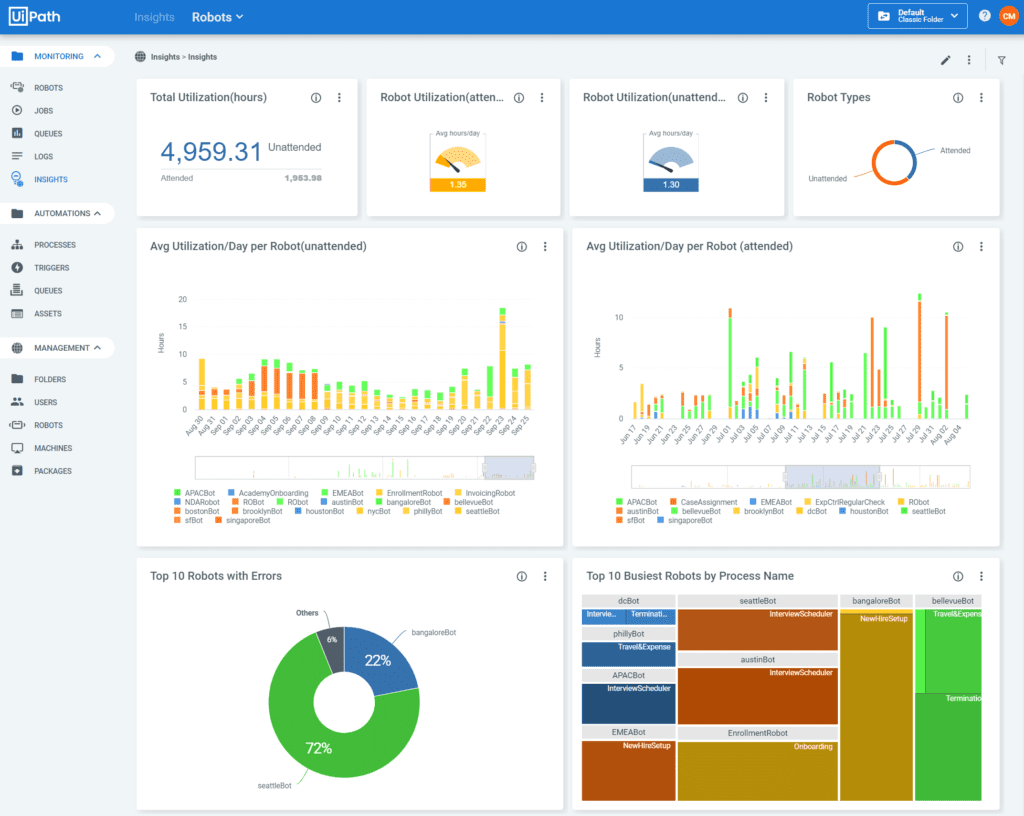
UIPath can discover and manage automation opportunities with transparency and control. It can automate processes rapidly with drag-and-drop AI and ready-to-go templates. Further, it includes governance, security, scalability, and performance features. UIPath offers rich governance with its customer base spread across large and midsized enterprises as well as larger SMBs.
Key differentiators
- UIPath’s acquisition of Cloud Elements created an enterprise-level integration platform as a service (iPaaS) edge over many of its competitors in terms of integration for process automation.
- UIPath is an integrated low-code platform that targets the many personas within the process automation life cycle such as IT, business managers, and developers.
- The platform’s app builder interfaces with cloud and on-premises applications, including ERP and legacy systems.
- UIPath offers more than 200 ready-made components.
- All automatable work is assigned to software robots within the platform.
- Users with little to no coding experience can develop automations and automation-powered applications.
What is robotic process automation?
RPA software is needed to bring everything together, combining the processes with the actions of the robots. This category of tools is all about harnessing robots more efficiently. It automates repetitive, labor-intensive, and time-consuming tasks, minimizing or eliminating human involvement to drive faster and more efficient processes across the factory floor.
Instead of having dozens of workers in a manufacturing plant, an RPA specialist can program and run robots to perform those duties. Typically, another person is involved with servicing, maintaining, and repairing the hardware.
Key features and benefits of RPA software
RPA software features vary tremendously from vendor to vendor and application to application. Some deal exclusively with stationary robots, some with mobile robots, and others with several robots working in concert. Thus, the robot controllers that tie everything together tend to be specific to one platform or designed to integrate a couple of platforms such as Ethernet TCP/IP, Ethernet IP, EtherCat, PROFIBUS, PROFINET, and DeviceNet. Depending on the function of the robot, the process involved, and the communication protocols used, RPA software allows robots to communicate with other robots as well as supervisory servers, Programmable Logic Controllers (PLCs), vision systems, sensors, and other devices.
But the benefits are many. These include a substantial reduction in labor requirements, more accuracy, increased process speed, lower manufacturing costs (if you can afford the equipment), the ability to control factory processes remotely, streamlined workflow management, improved scalability, and better security.
RPA and AI
The latest trend is for RPA to be integrated with AI to deal with high-volume, repeatable tasks. By handing these tasks over to robots, labor costs are reduced, workflows can be streamlined, and assembly processes accelerated. Software can be written, for example, to take care of routine queries, calculations, and record keeping.
Historically, two different teams and two different kinds of software were needed in industrial settings: RPA software and factory automation systems. The robotics team consists of specialized technicians with their own programming language to deal with the complex kinematics of multi-axis robots. Factory automation engineers, on the other hand, use PLCs and shop floor systems that utilize different programming languages. But software is now on the market that brings these two worlds together.
Further, better software and more sophisticated hardware have opened the door to a whole new breed of robot. While basic models operate on two axes, the latest breed of robotic machinery with AI is capable of movement on six axes. They can be programmed to either carry out one task over and over with high accuracy and speed or execute complex tasks such as coating or machining intricate components.
“For stationary robots to work seamlessly with mobile robots, it is essential that they can exchange information accurately and without failure,” said Samir Patel, Senior Director, Robotics Engineering at Kawasaki Robotics USA.
How to choose the right RPA software
Comparing RPA software vendor to vendor is a less straightforward process than it is in other areas of software. When selecting a vendor, it is best to narrow your focus to the protocols and functions your organization requires. That should slim the number of prospective candidates down considerably.
Read next: How to Choose RPA Software: 8 Things to Consider
[ad_2]
